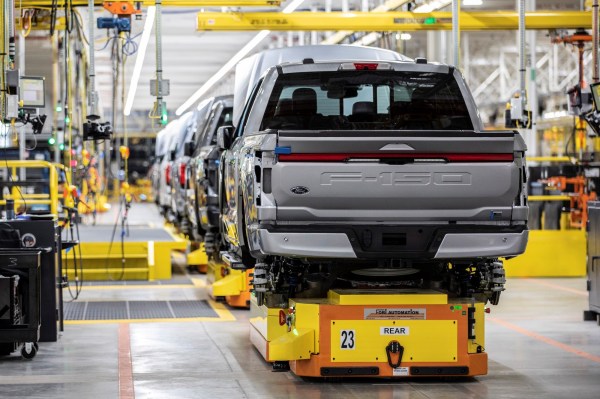Ford said that it wants to restructure its dealership model, including building an e-commerce platform where customers can shop for and buy EVs at non-negotiable prices in an effort to match Tesla’s profit margins.
“I feel like when that second quarter last year profit came out for Tesla and they showed like a $15,000 premium, it totally changed my world,” CEO Jim Farley said at the Bernstein Strategic Decisions Conference on Wednesday. “It was an epiphany. It was like the angels sung, it was like, ‘Oh my god, we can make more money on EVs than our ICE.’”
Farley’s comments in a lengthy interview came one day before the automaker announced it would spend $3.7 billion to hire 6,200 union workers to staff several assembly plants in Michigan, Ohio and Missouri in a bid to sell 2 million EVs a year by 2026.
Farley said he expects massive consolidation among dealers, suppliers and automakers as the industry begins building more EVs. His comments come at a precarious time for car prices due to the supply chain crunch and instances of dealerships gouging customers for new vehicles.
In the future, dealers won’t hold any inventory, he added. Instead, the vehicles will ship directly to the customer, with remote pickup and delivery.
“Their business will change a lot,” Farley said. “There will be a lot of winners and losers, and I believe, consolidation.”
He did not give a timeframe for the shift to online sales or elaborate on Ford’s plans for its dealer network.
Transitioning to an online-only sales model would entail numerous challenges, because automakers have limited control over their dealership networks. Car dealers are protected by state laws and spend millions of dollars annually on lobbyists to maintain their status.
Tesla operates retail stores but has no dealerships, which is a key advantage in cutting middleman costs and retaining profits.
Meanwhile, Ford is changing more than just the way it sells cars. In a historic restructuring in March, Ford separated its EV business from its combustion unit. Profits from the combustion business, which is called Ford Blue, will fund the growth of the EV unit, called Ford Model e.
Farley likened his vision for the automaker’s sales model to Target’s strategy of leveraging its physical stores to compete with Amazon. “Target could have gone away, but they didn’t,” he said. “They used their expertise as a physical retailer to their advantage, but they modernized the e-commerce piece.”
“It’s exactly what we have to do on the retail side,” Farley said. “We’ve got to go to a non-negotiated price. We’ve got to go 100% online so that the inventory goes directly to the customer with 100% remote pickup and delivery.”
Farley said Ford is working with dealers to transition into the future.
“I believe on the retail side, we can do things post-warranty and remix the marketing spend to have a better experience,” he said. “I think our dealers can do it, but the standards are going to be brutal. They’re going to be very different than today.”
Clarification: The original story said Ford is going 100% online. That doesn’t mean Ford is getting rid of its in-person dealerships, according to a spokesperson.
